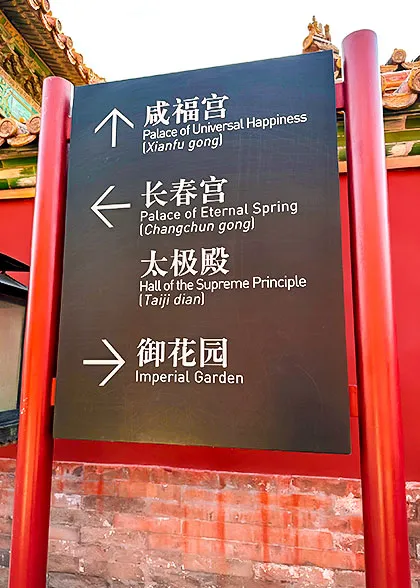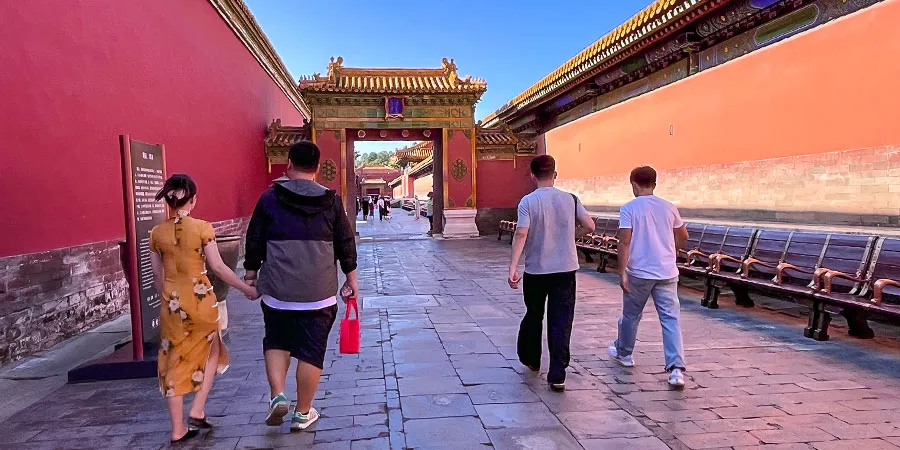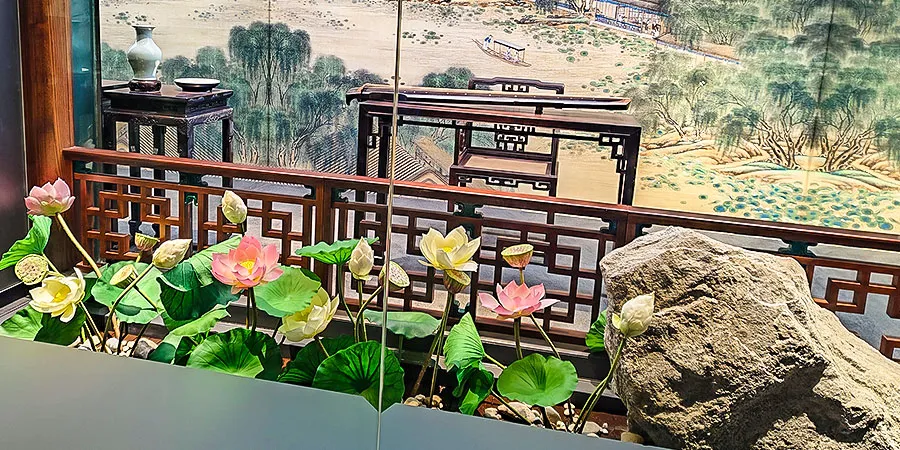Palace of Universal Happiness (Xianfugong)
 |
| Signpost in Six Western Palaces |
Note: The Palace of Universal Happiness has been closed since 2008 for relic protection.
Layout
The Palace of Universal Happiness consists of two sequential courtyards. Its main entrance, the Gate of Universal Happiness, features glazed tiles and opens to a wooden screen-wall with four panels. Beyond this is the palace's main hall—also named Palace of Universal Happiness—a formal reception space with a courtyard paved in white marble. The rear courtyard centers on the Hall of Shared Path, the private living quarter.
What Functions & Who Used?
Home for Emperor's Concubines
The Palace of Universal Happiness functioned as a home for imperial consorts from 1420 to 1750, and resumed this role from 1850 to 1911 after being used by emperors for a century.
To instruct the concubines behave well, in 1741, Emperor Qianlong (1711~1799) hung the painting Concubine Confronting the Bear in the palace's main hall. The painting celebrated the bravery and loyalty of Concubine Feng (?–6 BC), who had heroically shielded the emperor from an escaped bear in the imperial garden, earning the emperor's profound respect.
Empress Dowager Cixi—the most notable occupant of the Palace of Universal Happiness—later seemed to erase this chapter of her life. In 1855, the young Cixi was banished to the palace's rear hall by Emperor Xianfeng for an unspecified misstep. But within a year, she gave birth to the emperor's first son, an event that restored her status and allowed her return to the Palace of Gathered Elegance.
 |
| Way to Universal Happiness Palace |
Shared Path Hall Seal, once stored in the palace's rear hall of the same name, was first used by Emperor Xianfeng (1831~1861) to mark his favorite artworks, and later became Cixi's tool to wield power.
Besides art-appreciation seals, in ancient China, emperors also had dragon seals for authenticating official decrees. But in 1860, at the moment the Forbidden City was occupied by foreign troops, Xianfeng fled in such haste that he took only two seals to maintain imperial authority, including Shared Path Hall Seal.
As he lay dying in exile, Xianfeng gave the seals to his empress and son—proof that the boy was now emperor, during which Cixi, the child's mother, saw her opportunity and took control of the Seal using the excuse of helping her young son rule. With each imprint on official documents, her role gradually evolved from regent to the Qing Dynasty's real ruler.
Emperor Qianlong's Study
From about 1750 to 1799, Emperor Qianlong used the palace's rear Hall of Shared Path as his study. He turned the eastern room into a sanctuary for seven-stringed plucked instrument, favored by ancient Chinese literati, and the western room into a treasure trove for precious ancient paintings.
Records show that there was a lotus pond in the Palace's courtyard. Emperor Qianlong would often sit amidst the blooming lotuses to play the instrument. The harmonious combination of the tranquil water garden and the resonant tones of his instrument created a profoundly peaceful atmosphere that brought him great joy.
 |
| Restored Scene of Emperor Playing the Instrumet |
Royal Mourning Place
In 1799, following Emperor Qianlong's passing, his son, Emperor Jiaqing (1760~1820), moved into the Palace of Universal Happiness to mourn for ten months. To show his sincere fidelity, he ordered all beds removed and only white felt and straw mats laid down for his stay.
In 1850, Emperor Xianfeng resided in the Palace for a few months to mourn for his father Emperor Daoguang (1782~1850).
See more Six Western Palaces
- Last updated on Oct. 09, 2025 by Jally Zhang -